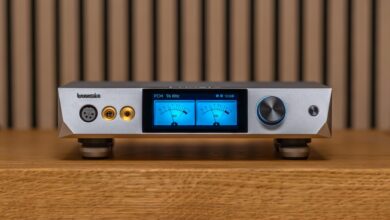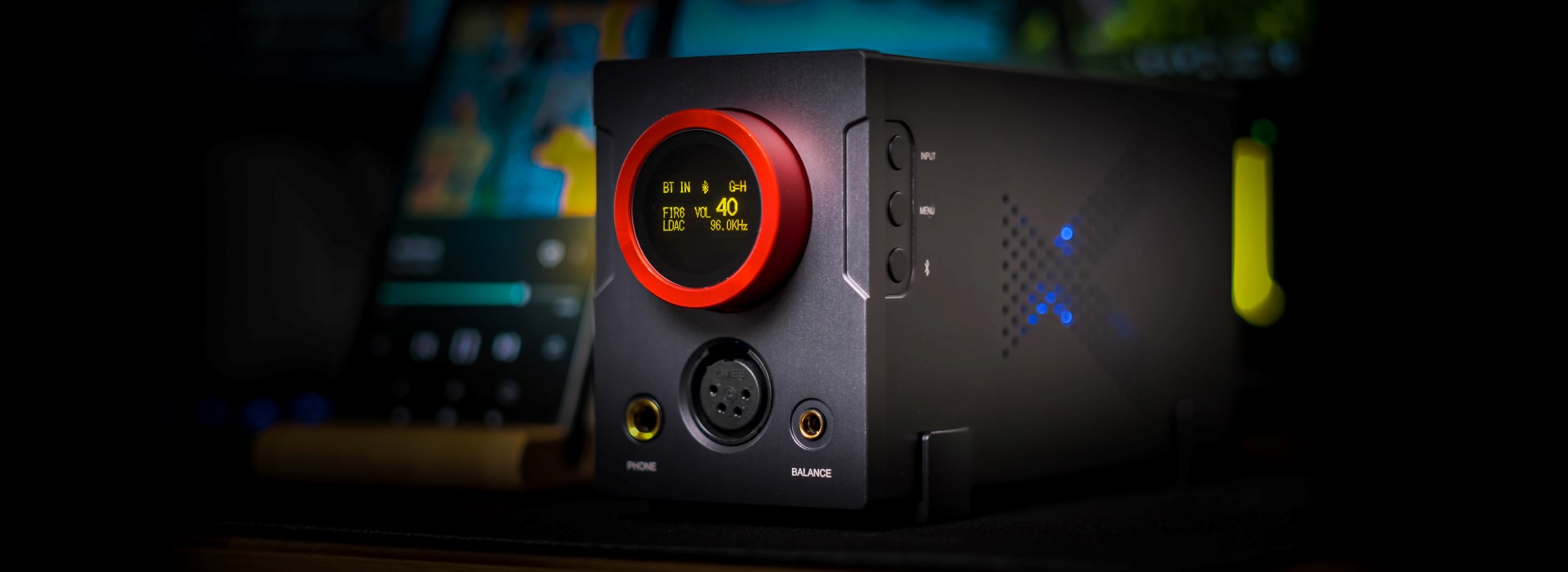
My Video Review:
After a long and stressful 2020, xDuoo started a fresh new year stronger than ever. In January they already revealed several cool new devices such as Link2 USB dongle, some tube-based MT-601 and MT-602 headphone amplifiers, the lady in red TA-10R came next, followed by their flagship portable unit – the XD05 BAL. However, the one and only that captured my attention in full was their fresh out of the oven XA-10 desktop class DAC, headphone amplifier and preamplifier combo. What is exactly so interesting about it you might ask? Its dual DAC configuration and a full MQA decoder isn’t a novelty to anyone, but its 8 (Yes, eight!) discrete output transistors fully biased into Class-A…that is something you don’t see every day in DAC/Amp combos that cost less than $500. As a small detour, Burson Audio Soloist 3X and Conductors 3X units have 8 of them, Flux Lab Acoustics FA-10 has also 8 of them, but those units are bigger and considerably more expensive. The little XA-10 fights in the lightweight category, but I can assure you that it punches way above its weight. My curiosity plunged sky high and I simply needed to hear it for myself. Knowing all their past devices and the philosophy behind them, this little wonder could be the last DAC/Amp combo you’ll ever need in a headphone setup.

Unboxing
The little wagon like thingy came double boxed with plenty of foam surrounding the unit as an extra protection measure. There is an accessory box on top that holds its power brick, a power cable, a really nice gold-plated USB cable with a ferrite magnet in the middle, there is a headphone adapter so you can use your headphones terminated with 3.5mm jacks and there’s a short Bluetooth antenna that should boost its signal by a little. A warranty card and a very detailed user manual in English will tell you more about its specs, I recommend checking out its safety instructions, since a Class-A device will consume more power and will dissipate more heat in the process. xDuoo recommends using it in a well-ventilated area at all times.

Design and Build Quality
In reality, XA-10 is much smaller to the pictures you can see online. it’s small and lightweight and can be easily carried around. xDuoo moved its power supply outside of its case, leaving room only for crucial electronics. It’s a switching mode (SMPS) universal power supply, custom developed by xDuoo, so you can use it anywhere. It outputs 12V and 3A, meaning that XA-10 consumes around 36 Watts at maximum volume. It has a very small footprint, it is slightly bigger to a modern smartphone, so you can use it virtually anywhere, even in very cramped office desks. It has a thick aluminum front plate and the rest of its body uses bended aluminum sheets. You can spot plenty of holes on both sides, taking the shape of xDuoo logo, they will be moving hot air outside, prolonging the life of its valuable electronics. I really like its tiny, yet beautiful feet, they have circular silicone pads that will absorb shocks and vibrations, they added some more holes under the unit and made its feet taller, again helping with the heat dissipation.
Its matte cherry-red volume wheel hides a circular 0.96” OLED screen in the middle, I never seen anything like this before, but immediately I’ve developed a deep appreciation for this clever design, that uses its limited space to the maximum. When XA-10 is engaged, several low-intensity blue LEDs will be shinning on both sides. In complete darkness there is very little light pollution and those didn’t bother me in late night listening sessions. There isn’t more to say about it, I think it looks cute, packed with a lot of inputs and outputs.

Controls & Layout
Speaking of which, XA-10 offers two balanced outputs – a 4.4mm Pentaconn, a 4-pin XLR headphone jack, there is a regular 6.35mm (1/4”) jack and a stepped volume wheel sits on top. You can see 3 buttons on its right panel, the first one will select your desired digital input, the one in the middle will engage the user menu and the third one forces a Bluetooth pairing with your smart device.
On its back you can spot 3 digital inputs: USB, Optical and Coaxial, plus an analog input just in case you’ll use as a headphone amplifier and there an analog output in case you’ll used it as a preamplifier only. A Bluetooth antenna socket, a power switch and a 12V DC input can also be seen to its right.

Menu Settings
XA-10 isn’t coming with a remote control and you can access its user interface by pressing the Menu button on its right panel. Once you do that, an easy and straightforward menu like this will appear:
- Gain: has 2 positions, L – Low or H – High. Self-explanatory, I would use its high gain only for hard to drive headphones.
- Filter: has 6 positions: Sharp Roll-Off, Slow Roll-Off, SD Sharp, SD Slow, Super Slow and LD Short Delay. Those are changing the treble roll-off past 20 kHz (past our hearing abilities), if you don’t hear a difference, that is perfectly normal.
You have a separate button to change its input and another one for Bluetooth pairing. Apart from this, its display will show the selected input, the gain, the filter, media type (PCM or DSD), sample rate and your volume position. If MQA files are being played locally or via streaming services an MQA logo would appear on its screen. Very simple and efficient, big plus right here.
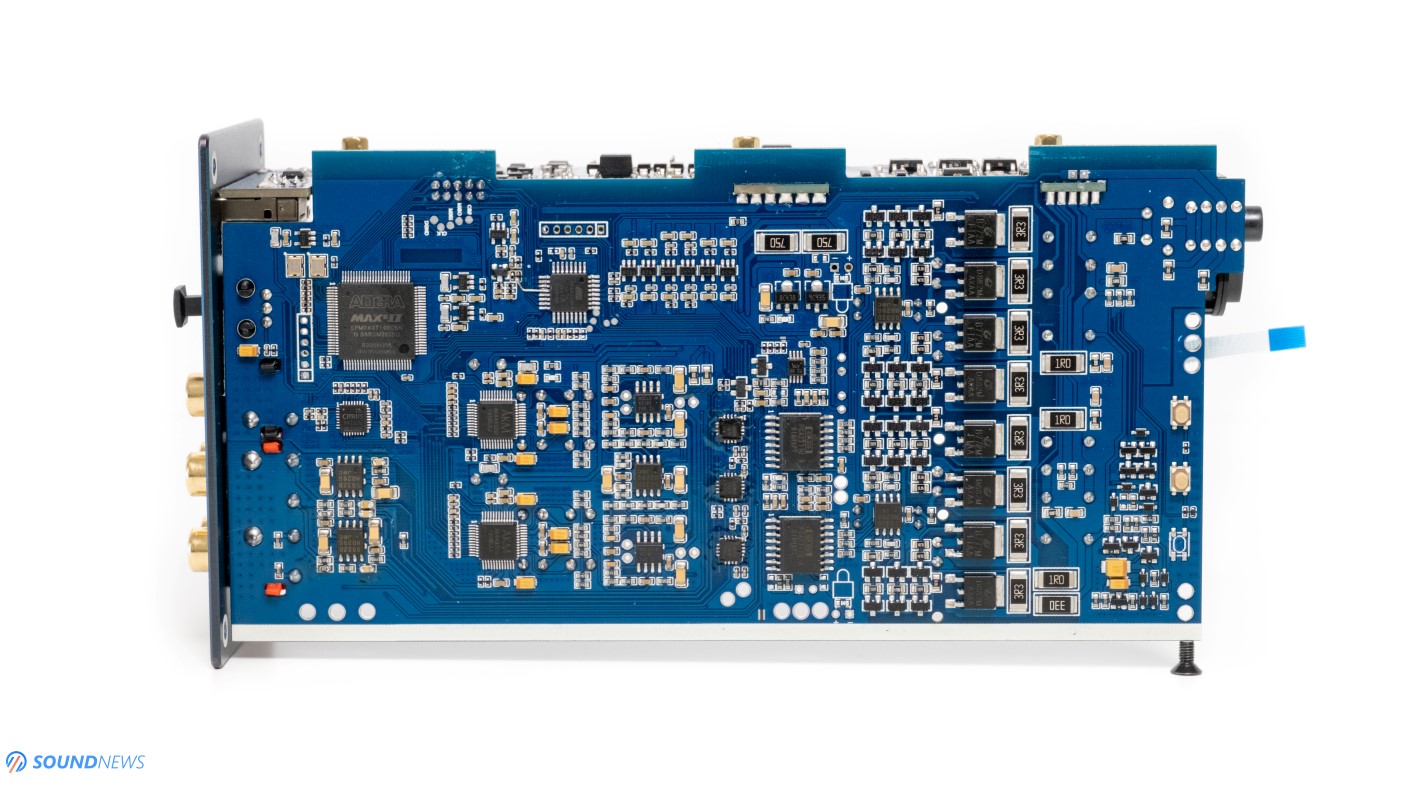
Under its Hood
XA-10 is a fully balanced DAC and headphone amplifier. Its digital section is based on dual AKM 4493 DAC chips. xDuoo has plenty of experience with this particular chipset, they used it in their TA-10R and I hope they have sufficient stocks until AKM opens business doors again.
Apart from this, we are getting the same reliable and super steady USB receiver, the famous XMOS XU216 that can be found in the best DACs of today. Thanks to it, XA-10 is able to decode natively MQA files, DSD512 and 32-bit 768 kHz PCM files via its USB input only. An Altera MAX II FPGA will be doing all the PLL shaping, clock management and DOP modulation. Its buffer stage (DAC output stage) is built around two OPA1612 op-amps, those are widely used nowadays in plenty of converters. You can find them in Gustard X16, Topping D90 MQA and in many other devices owing to its smooth and warm sound signature. Thanks to a flagship Bluetooth receiver from Qualcomm (CSR8675), XA-10 supports all the nicest codecs as SBC, AAC, AptX, AptX-LL, AptX-HD and LDAC, plus its included Bluetooth antenna should give a helping hand when there is one or two concrete walls between the sender and the XA-10.
Its headphone amplifier section is built around 8 bipolar transistors (4 pieces of D822M and 4 pieces of B772M) and several discrete components all biased into Class-A. This is the most important and the most impressive part of XA-10, as usually you can find Class-A transistors in some of the best headphone amplifiers of today. It outputs 4 juicy Watts in 32 Ohms on its balanced jacks and 3 Watts on its single ended output and that seems more than enough for pretty much every headphone out there.
XA-10 has a much lower channel crosstalk and a higher signal-to-noise-ratio via its balanced outputs, so I strongly recommending using its balanced outputs for the best results. Okay guys, my ears started to itch, so let’s hit some ear-drums!

Sound Performance
I. Preliminary Sound Impressions
After one week of painful burn-in, armed with some of the most detailed headphones, I finally calmed my spirits with a glass of whisky and sat down for a long listening session. Even after the very first beats, I could swear that I was listening to an xDuoo device. I felt its unmistakable character, its bad attitude and its obvious sound signature from afar. I yet to test a lean, boring, bright or super linear sounding xDuoo device and XA-10 follows the same unwritten rule.
After pressing play, I’ve heard some fast executed punchy bass notes, a very seducing midrange delivery, an ease going treble that seemed a little rolled off and an effortless sound that was stretching wide open in all directions. Depth was impressively layered and deep sounding, I’ve had all the signs of a well-designed unit and of an incredible driver control. If you consider yourself a serious headphone listener and you want the best bang for your buck, I honestly don’t know anything better at less than $500. It just outperformed units like Topping DX7 PRO and SMSL M500, especially when it comes to driver control, easiness, warmth and body. The former devices felt more like standalone DACs with headphone jacks put as accessories, while XA-10 feels a lot more complete, due to its impressively powerful headphone amplifier section.
What is more important than anything else, is that with XA-10 I just wanted to listen to more and more music, it called and dragged me in with its natural harmonics and I didn’t feel the same with its alternatives. XA-10 didn’t appear as extremely detailed and uber-transparent, but everything else felt at such a high level, that I don’t see a point in investing in a more expensive setup. If you enjoy tube warmth, sweet harmonics, powerful bass delivery and airy presentations of tube-based amplifiers, but dislike swapping tubes and their short life span, then XA-10 seems like a very good alternative that goes into the same direction sound wise.
My jaw dropped on the floor when I’ve connected the mighty Hifiman Susvara as somewhere around 88 out of 100 on its volume wheel, it was able to sustain some long bass notes without shutting itself down. I was surprised that dynamics didn’t collapse on me in all fairness with this particular headphone, I liked the sound of XA-10 a lot more compared even to my own $3000 Benchmark HPA4. After several more days, I’ve realized that it pairs extremely well with all Hifiman headphones, by adding more life in them, by awakening higher dynamics and punchy bass notes. Its indeed lacks a few micro-details here and there, as I cannot spot all the mastering errors, but who cares when XA10 is the pure definition of fun in its purest form!

II. Power Output
I will move directly to the most interesting aspects of the XA-10 and its power output is one of them. XA-10 can be described as having almost unlimited power, even for the most demanding headphones if you are using its balanced outputs. Its Class-A working principle provides enough current even for the most demanding planar-magnetic headphones. As you can imagine, everything like portable over-ears, IEMs, portable and desktop dynamic headphones were easily driven with flying colors. The biggest majority of my headphones are planar-magnetics and XA-10 didn’t have a problem with either of them. Even Audeze LCD-4, Hifiman HE1000SE were fully driven, with plenty of authority in the bass, sweetness in the midrange and with a harsh-free top octave. Dynamics were explosive, those were going up and down like a roller-coaster, it sounded engaging and toe tapping all the time. Maximum I could go was 60 out of 100 with such headphones, leaving a ton of headroom on the volume wheel for better mastered music. Hifiman Susvara is easily the hardest to drive headphones I have ever tested, it shuts down most headphone amplifier, even a power amplifier was entering its protection mode with such a heavy burden. Now imagine my reaction when this 900-gram little thingy at around 88 on its volume wheel was fully sustaining the bass on Limit to Your Love by James Blake (Qobuz / Tidal) and on Angel by Massive Attack (Qobuz / Tidal). If you think sustaining a loud bass note is something easy to achieve with the Susvara, think twice as my own amplifier can’t do that and there are many others that will not provide a satisfactory experience with such a heavy load.
To say that I was surprised would be an understatement and I’m happy to add the little fellow in the very short Susvara approved amp list. Apart from Susvara, XA-10 would drive anything you could imagine with its chin up, with punchy dynamics, with a rock-solid driver control and with an unlimited headroom on tap.
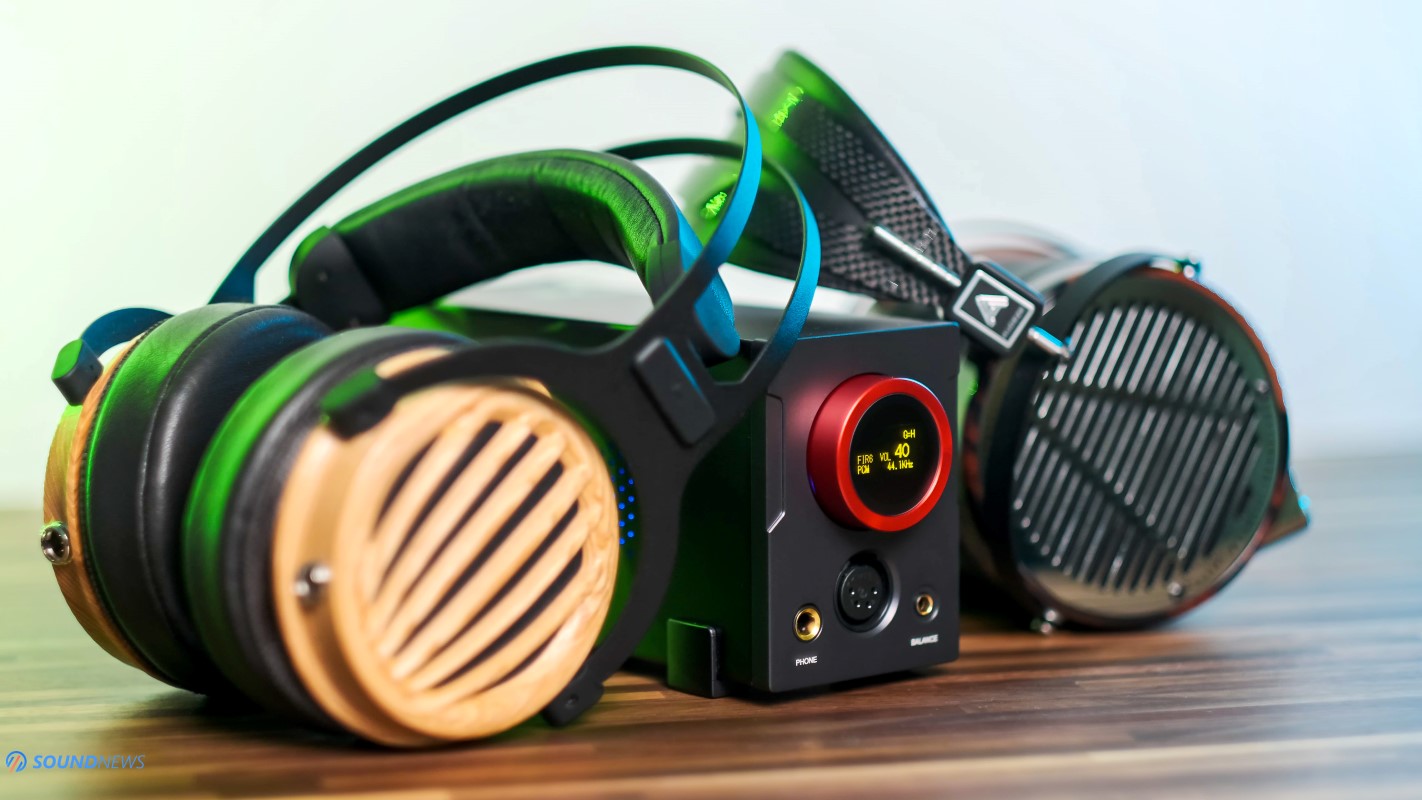
III. Transient Response
Transistor based Class-A amplifiers of all sorts were made for wild and crazy dynamic swings, there isn’t anything stopping their current output and there isn’t anything more impressive sounding when it comes to bass slam. In this regard, XA-10 outperforms every single THX-AAA based and NFCA based amplifiers I know of and all other class-A amplifiers like Burson Soloist 3X and Flux Lab Acoustics FA-10 are sounding the same to me. There is an overwhelming sensation of power, of effortlessness, of air moving freely around in the bass territory like its nothing. xDuoo used its internal space at maximum putting two PCB boards and populating them with plenty of capacitors for a better power filtering and for a higher power storing. Combine its higher capacitance with its discrete amplifier stage and you can almost imagine how it sounds. In simple words, when a bass note lands, it feels more powerful and much heavier, delivering a more visceral and impactful experience. There is a trend ongoing right now, a war on amplifier measurements and while I don’t have anything against good measuring equipment as those are still very important…the final result is always a lot more important than all the measurements combined. I personally know several manufacturers that aren’t listening to their audio equipment, as they only care for great measurements. On the other hand, there are plenty of audio tinkerers around the world that only care about the sound of their creations and I am pretty sure that xDuoo is part of this group.
When De Dor Și De Bucurie by Subcarpați (Qobuz / Tidal) made an appearance on my playlist, I wasn’t shocked to hear those 20 Hz notes loud and clear, like a heavy air mass was slowly traveling around. Susvara transformed from an obedient and shy sounding headphone into a REL Carbon Special in a split second. The bass extension was special and XA-10 didn’t have a problem with its speed, or with the slam that followed.
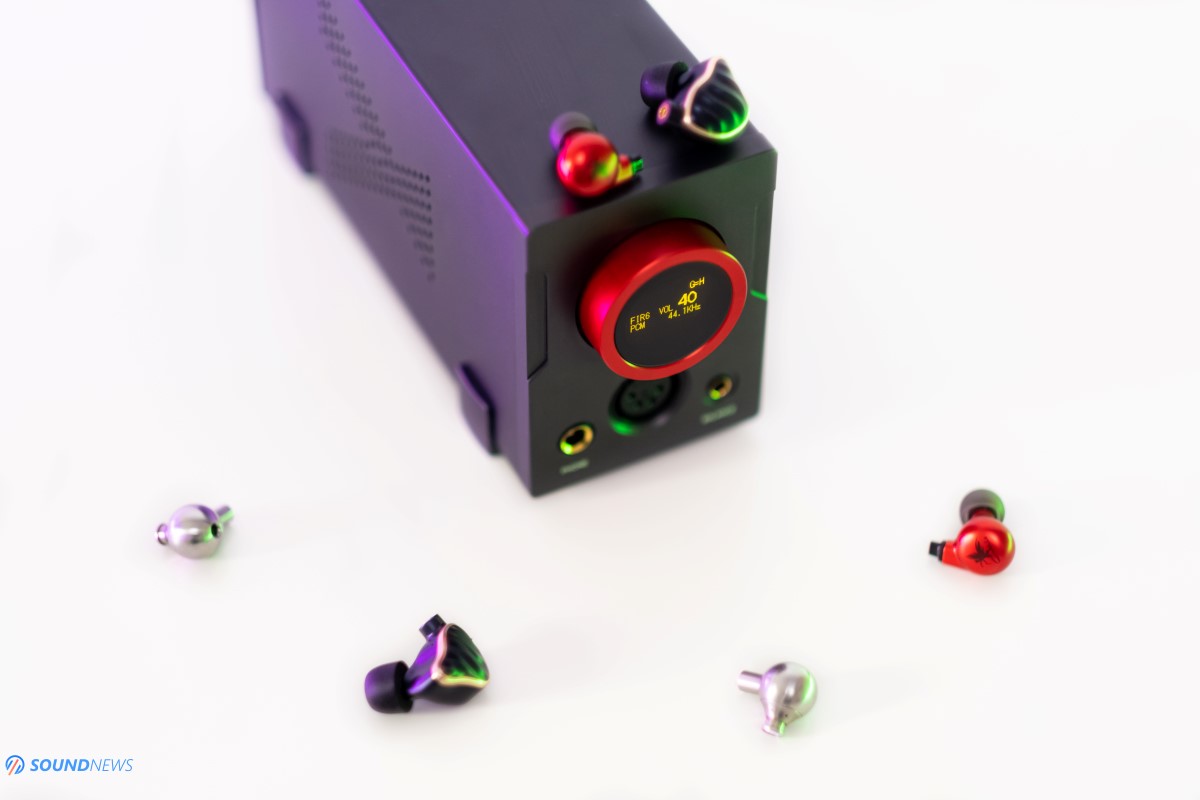
IV. Noise Floor & IEM Pairings
xDuoo didn’t mention its exact noise floor in Micro-Volts, only its Total-Harmonic-Distortion (THD) of 0.0008%, which is already very low. Those Nichicon and Elna caps are conditioning its less impressive switching mode power supply and its dual PGA2311U volume control chips are also lowering down the noise floor considerably. With all that said, it is almost impossible designing a powerful Class-A amplifier without a little bit of residual noise sneaking in. I mean, I personally don’t know a single dead-silent Class-A headphone amplifier, Burson and Flux units performed the same and XA-10 walks the same path.
No matter the selected gain or the volume position, there is a little bit of residual noise with the most sensitive IEMs I have around (FiiO FA9, sensitivity of 113dB per 1 mW). It feels like a low-intensity hum that is always there no matter what you do. The big plus is that it isn’t increasing in intensity on high-gain, on balanced outputs or on a higher volume position, it always stays at the same level no matter what you do. With less sensitive IEMs like Meze RAI Penta or LittleDot Cu KIS, the noise intensity lowers considerably and with over-ear portable headphones like Meze 99 Classics and Sennheiser Momentum 2, the noise goes for a walk, never to be seen again. With all sorts of desktop headphones, be them dynamic or planar, I couldn’t spot that noise anymore. Let’s be serious, will you buy a desktop class DAC/Amp for your IEM collection? I don’t think so. The funny thing is that their battery powered XD05 BAL has a higher noise floor and, in my opinion, they did a marvelous job with the XA-10.
The highest sensitivity desktop headphones like Kennerton Gjallarhorn didn’t show an increase of noise floor and I presume that Focal headphones would perform exactly the same. As you can expect, the same warm and meaty presentation carried over, it drove all those IEMs with an amazing control, speed and slam. It sounded alive, fast and engaging and it moved larger quantities of air compared to portable DAPs. Soundstage was quite special, as several IEMs started sounding more like semi-open desktop headphones.

V. Soundstage & Depth
There is a substantial difference between its regular headphone jack and both balanced outputs in terms of channel cross-talk. More exactly a 35 dB of difference and generally speaking you want it as low as possible so that your headphones wouldn’t be limited by anything, even at higher volumes. You can certainly feel that when you plug-in a nicer open-back headphone on the balanced out. I can’t say that the left to right soundstage doubled in size, but the whole picture was definitely a little bigger and more scattered around. From a big majority of solid-state amplifiers, those that use discrete components as transistors sounded more layered, more extended and certainly airier to me. No matter how good you are as an audio engineer, you’ll be always limited by op-amps, by their limited bandwidth, current and voltage output. XA-10 doesn’t have those limitation and it appeared as bigger sounding compared to THX and NFCA amplifiers, I could easier appreciate the depth and all the positioning of the notes around me.
There wasn’t a track that sounded closed-in or up-front and I’m pretty sure that its nicer capacitance also played a role in unlocking a nicer holographic stage that stretches wide and open. Open-back planars pushed everything outside my head, easily going past my shoulder level, portraying a vivid and clear picture in front of me. On top of that, a double AKM design and a fully balanced output stage will never limit the soundstaging capabilities of your headphones, that is almost an unspoken rule that just works no matter what.

VI. Resolution & Transparency
While XA-10 isn’t sounding distorted and muddy like an old tube radio, it will not win you over with its detail retrieval or transparency. Please, don’t get me wrong, it is still a very clean sounding unit, it lacks distortion even at much higher volumes, but the leading edges weren’t that sharp, the trebles weren’t itchy or bright and its detail retrieval wasn’t that impressive. What else would you expect out of an AKM and transistor-based design, right? It will not show the tiniest details, all those crackles and pops from your tunes, XA-10 is almost adding a beatifying filter all over your music. You can still spot musical notes playing in the background, but their intensity and their sharpness are toned down a bit.
You should make your mind, are you hunting for an ultimate transparency or are you after an entertaining type of sound, that always makes you move and smile. XA-10 will not win the measurement war, but it will surely pump a lot of positive vibes in your tunes. Both the Hifiman Susvara and HE1000SE transformed into something else, becaming a lot more enjoyable and livelier sounding. If I wouldn’t write and film these reviews, I will be totally getting an all-discrete class-A amplifier, showing my middle finger to all those perfect measuring amplifiers. I mean who the hell wants a lot of zeroes after a full stop, if the amp isn’t making music, but just plain and soulless sounds?

VII. Frequency Response
xDuoo being themselves, put a lot of soul and character in this one, they didn’t tune it for a linear frequency response, but for an enjoyable listen long term. There are plenty of thumpy bass notes, a lot of midrange presence and a very textured, yet inoffensive treble.
A. Bass
Sub-bass is surely one the nicest parts of this amplifier. The amount of kick and sheer slam that is coming from it is out of this word. This is the lion-heart that won me over with its ballsy attitude in the bass. I’ve listened to a lot more electronic music and I could never get bored while listening to it. At first, I thought that its bass performance is a little elevated, but no…this is exactly how bass should sound. It should be visceral, it should send shivers through your spine, it should carry more weight, more air and deliver harder punches. Its mid-bass performance is absolutely the same, it always shouts and calls for your attention. In spite of that, I felt it clean, always breathing, airy and layered, lacking any sorts of distortion. A strong and impressive bass performance that I would take and plant inside my own amplifier if I could.

B. Midrange
xDuoo was always about the midrange presence, about emotions, about having a really good time while listening to music. I’m serious, every single device I’ve reviewed from them was really good in this department. Be it TA-10, TA-10R, TA-30, XP2 PRO, XD-05 Plus, XD-05 BAL and now XA-10, they all carry a bold and warm tonality. You can expect guttural male voices and high-pitched female voices that could put goose bumps all over your body. Expect natural decays, you can feel the wooden texture of those musical instruments, you can feel the added weight of piano notes, you can feel the air thicker while it is traveling around. Everything feels just more colorful, more saturated, there is more contrast and believe me, after listening to linear sounding gear for quite some time, the only cure you can have is a little more warmth, more soul, more body and more naturalness coming from your music. Forget about thin, dry or linear midrange, as XA-10 is more about boosting the mid-tones, while toning down dryness and brightness.
C. Treble
Treble is quite textured, you can certainly feel the cymbals shimmering and their metallic textures, but you will never experience a longer ringing of those notes. Treble is never nasty or troublesome in long listening sessions, it feels more natural, it has the right timber without going overboard with sharpness and brightness. The upper region is clean and defined, but sometimes it feels a little smoother and rolled-off, jus the upper tip of the spear is a little more blunt and less invasive. This kind of treble helps cope with the brightness and literally transforms bright sounding headphones, making them more manageable and a lot more pleasant in late night listening sessions. Hifiman HE1000SE is a little sharper and brighter than usual and XA-10 worked as a cure, making them calmer in the treble, more organic in the midrange, while fully retaining their powerful bass delivery.
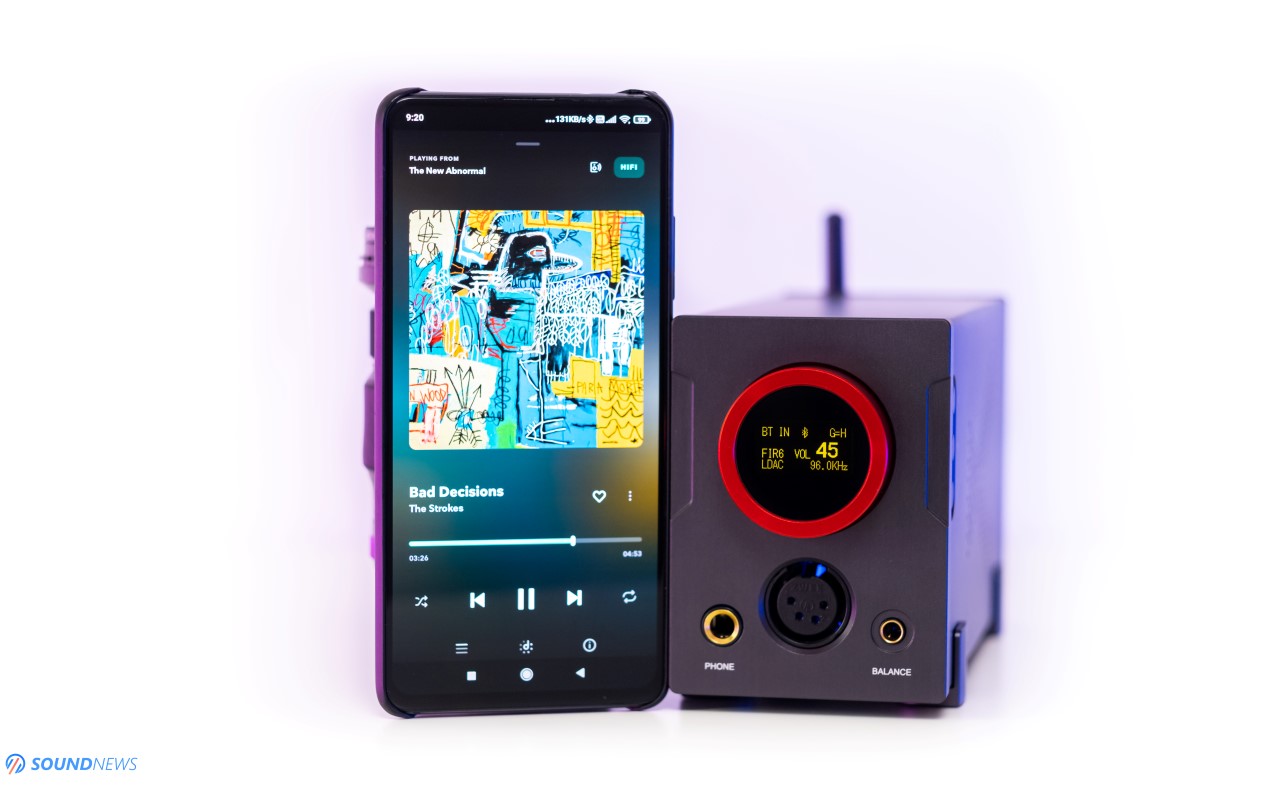
VIII. Wireless Performance
XA-10 supports all the nicest codecs like AptX-HD, AptX-Low-Latency and LDAC. My android smartphone has them too, so I’ll be squeezing the best it has to offer. Establishing a BT connection is extremely easy, just select the Bluetooth input, connect to “XA-10” with your smart device and you are good to go. It will start showing on its screen the exact codec that is being used and right now it shows LDAC and a sample rate of 96 KHz.
XA-10 works much better as a Bluetooth receiver compared to their XP2 PRO and XD05 BAL units, the connection seems much stronger and I can actually move around and go to another room, without any drops, pops or crackles. It has some of the smallest BT antenna I’ve seen, so don’t except a rock-solid signal with 2 or 3 concrete walls or from a longer distance than 10 meters away. I walked around with my smartphone and with just a concrete wall between us at a few meters away it was still going strong. It didn’t hold that signal with 2 concrete walls and in open space at more than 10 meters, music started stuttering, losing a few beats here and there.
Its Bluetooth implementation seems to be good; it sounds great via LDAC and considering its small and lightweight body, it can be used as a secondary headphone system, maybe for a few tunes before bedtime, it is entirely up to you.

Conclusions
I don’t remember when I had so much fun with a DAC/Amp at this size and at this price point. There were several attempts from Topping, SMSL and others, but I never liked their linear and super serious approach to music reproduction. xDuoo worked much harder in making it an excellent headphone amplifier that could drive pretty much anything, while fully retaining the soul of the music and the fun factor! Its amazing bass slam, its higher midrange presence and warm natural timbers are its biggest core values, that cannot be overlooked.
I’m crowning the XA-10 as the best all-in-one DAC and headphone amplifier that I’ve tried at less than $500. Considering its dual-mono and fully-balanced digital and analog sections and its discrete Class-A headphone amplifier section, it gets my highest recommendation and my highest award! Slowly but surely, xDuoo is becoming one of the most respected and unique audio manufacturers from China and I wish they will never change their philosophy of music first and numbers later.

It will cost you $479 and you can get it from xDuoo webstore right here. You can also get it from HiFiGo web-store over here, they are offering it for sale world-wide and will be sending it from the nearest warehouse to your location, so you can avoid additional fees. In case you get one, leave some feedback, I’m curious to know how it performs in your headphone setup. Until next time, signing out!
PROS:
- Unique looking body, small footprint and very lightweight
- Solid build-quality, has a good ventilation that prevents overheat
- Great tonal balance! There is plenty of warmth, smoothness and lots of rich overtones
- Fully preserves the soul of the music, while making it fun and engaging
- Impactful and hard slamming bass, it goes low and it’s being sustained if needed
- Extremely powerful amp section, drives pretty much anything, including the Hifiman Susvara
- Has one of the nicest driver control
- Lacks distortion at high volumes, clean sounding
- Great soundstaging capabilities, it is holographic and 3D sounding like a big’n’heavy amplifier
- Much better Bluetooth performance to their last attempts
- An outstanding value!
CONS:
- Slight hiss with ultra-sensitive IEMs
- Not the most detailed and transparent sounding wombo-combo
- Slight roll-off in the top octave
ASSOCIATED EQUIPMENT:
- Sources: Xiaomi Mi 9T Pro, Corsair One i160
- DACs: xDuoo XA-10, Gustard X16, Gustard X26 PRO, Matrix Audio Element X, Audiobyte HydraVox + HydraZap, Flux Lab Acoustics FCN-10
- Headphone Amps: Benchmark HPA4, SparkoS Labs Aries, Flux Lab Acoustics FCN-10, SMSL SP400, Burson Soloist 3X, Gustard H16 & others
- Power Amp: KECES S300
- IEMs: FiiO FD5, FA9, FH7, Meze Rai Penta, Rai Solo, LittleDot Cu KIS & many others
- Portable headphones: Sennheiser Momentum 2, Meze 99 Classics
- Full-sized headphones: Hifiman Susvara, Hifiman HE1000SE, Audeze LCD-4, Erzetich Phobos, Erzetich Mania, Kennerton Wodan, Magni, Gjallarhorn, Vali, M12S, Quad ERA-1, Ollo S4X Reference, HarmonicDyne Zeus & others
- Loudspeakers: KEF Reference 3
- Interconnects: QED Reference (x2), Topping TCX1 (x2)
- Speaker cables: Kimber PR8, Audioquest Type4
- Power Cables: Isotek EVO3 Premier (x3)
- Balanced Isolation Power Conditioners: PLiXiR Elite BAC400





